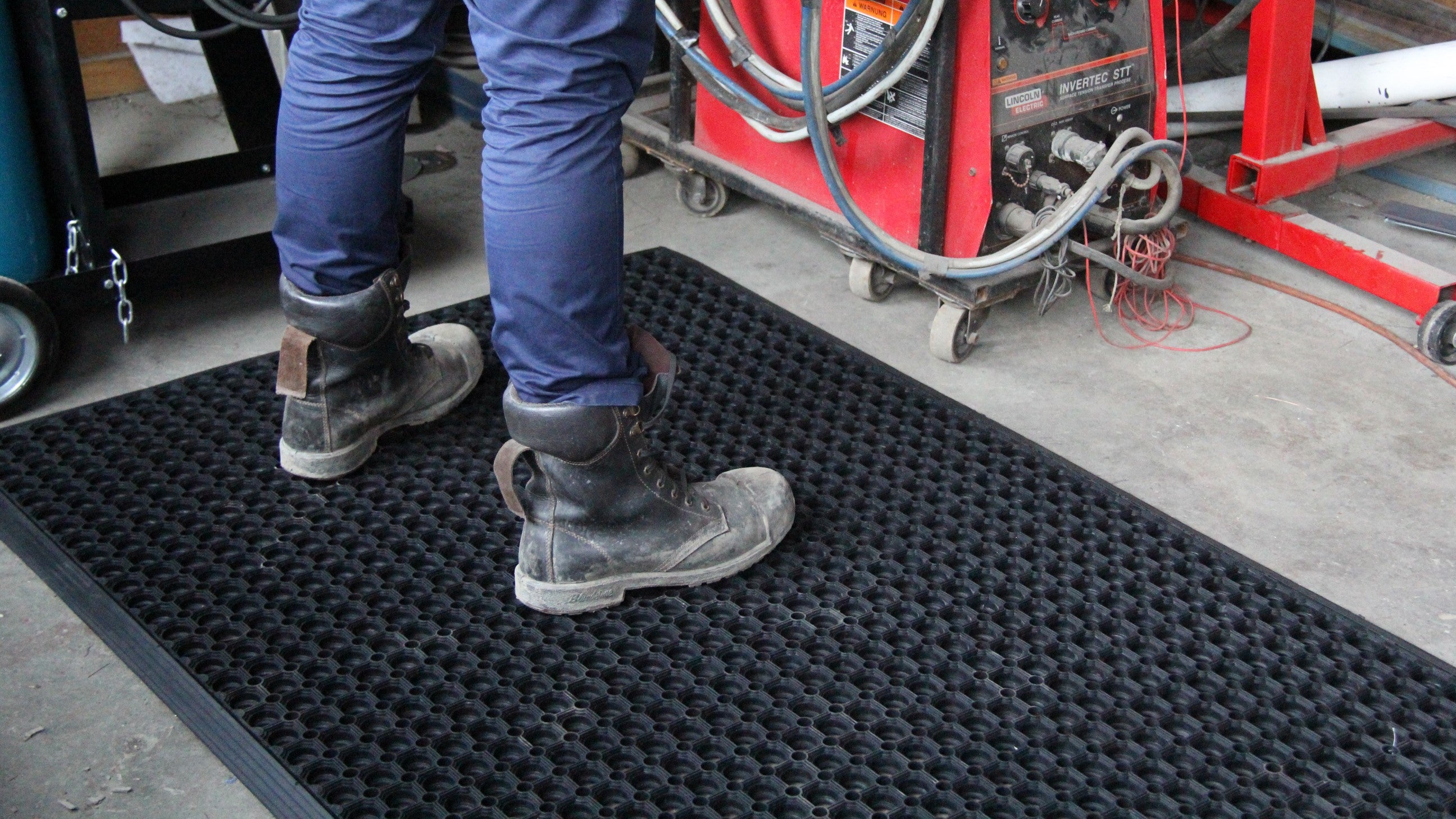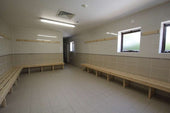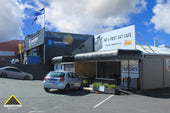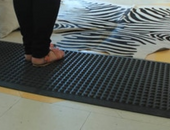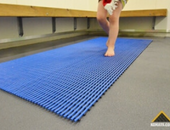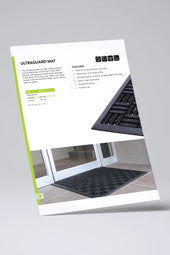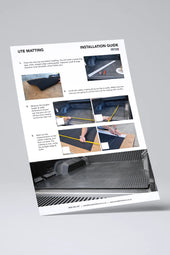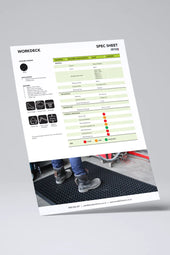Prolonged standing during the workday often leads to significant physical depletion, manifesting as back pain, leg fatigue, and diminished concentration. Integrating an anti-fatigue mat is the essential mitigation strategy, as it provides a necessary cushion to reduce musculoskeletal stress and improve standing comfort.
What many managers do not realise is that this exhaustion is not just a feeling; it’s a physiological response called static fatigue.
When someone stands still for hours, their blood circulation slows and muscles tighten, forcing the body to work harder simply to remain upright. Over time, this leads to chronic pain, reduced focus, and increased injury risk.
The solution is not more breaks or softer shoes, but a smarter surface underfoot. An anti-fatigue mat is designed precisely to counter these hidden stresses, improving comfort, safety, and performance at once.
The Hidden Danger: What Prolonged Standing Does to Your Body
Standing for extended periods might look harmless, but the human body is not built for it. The heart must constantly pump blood against gravity, and when movement is limited, blood begins to pool in the legs.
This increases pressure on veins and joints. The longer the standing continues, the greater the strain on the back, knees, and ankles.
Over time, these effects build up into what occupational health specialists call musculoskeletal disorders (MSDs), conditions like lower back pain, varicose veins, and chronic leg fatigue.
Many of these issues start subtly. An employee might shrug off a bit of soreness one week, then later find they cannot work a full shift without discomfort. In workplaces where efficiency matters, these small injuries quietly drain productivity. They also raise absenteeism and compensation costs.
A hard floor does not absorb impact or encourage movement. It locks the body in one static position. That’s where an anti-fatigue mat makes all the difference; it restores natural movement to an otherwise motionless task.

The Science of Support: How Mats Stimulate Micro-Movements
Anti-fatigue mats are not simply soft pads. They are engineered systems that promote balance and continuous small adjustments in posture. When a person stands on a resilient surface, it gently shifts under their weight, prompting the leg and core muscles to make tiny stabilising movements.
These micro-movements stimulate blood circulation, reduce stiffness, and relieve pressure on the spine. Understanding the science behind how anti-fatigue mats work helps businesses see why they are vital for reducing fatigue and improving worker well-being.
Think of it as a conversation between your body and the floor. Instead of standing rigidly, your body is subtly active, maintaining circulation and alignment without conscious effort. This design is backed by ergonomic science: studies show that workers using anti-fatigue mats experience less discomfort, fewer injuries, and greater endurance throughout the day.
Over a full shift, these benefits add up. Less fatigue means sharper focus, better posture, and fewer mistakes, factors that directly contribute to both safety and performance in any industry.

Beyond the Softness: Why Material Science Is Your Safety Guarantee
It’s easy to assume any soft surface will do, but not all mats are equal. Cheap foam products may feel comfortable for a few weeks, but often compress permanently, losing their ability to cushion and support. True anti-fatigue mats rely on advanced material science.
High-quality mats, like those supplied by NZ Mats, are made from engineered rubber and dense polymer compounds that balance firmness with flexibility. Too soft, and the user sinks in, increasing instability; too hard, and the mat fails to relieve pressure.
The correct balance provides the slight “give” needed for micro-movements while supporting long-term standing. This combination of durability and elasticity is what protects joints and posture. It also extends the mat’s lifespan, delivering better value over years of use rather than months.
In workplaces where conditions are tough, like production lines or commercial kitchens, quality materials become the difference between safety equipment and disposable padding.
If you need the best anti-fatigue mat for concrete factory floors in NZ, choosing one built for endurance and impact absorption will ensure long-term performance and comfort.
The Right Mat for the Right Job: Wet Area vs. Dry Area Safety
Different work environments call for different solutions. The wrong surface can create its own hazards, which is why NZ Mats offers specialised mats for both wet and dry areas.
-
Wet Area Mats: Designed for environments like food preparation, processing, or workshops where moisture is unavoidable. Mats such as the Kleen Thru Plus resist grease and chemicals while maintaining strong traction underfoot. Options like Aqua Grip or O Ring Mat ensure drainage and slip resistance in constantly wet areas.
-
Dry Area Mats: Perfect for counters, manufacturing lines, or warehouses. The Diamond Plate and Ergo Mat deliver firm cushioning and durability for extended standing. These mats perform best in clean, stable environments where comfort and support are the priorities.
Choosing the right mat is not simply about comfort; it’s about compliance and safety. A slippery or unsuitable surface in a busy workspace can cause serious injuries.
With expert advice from NZ Mats, each area of your facility can be matched with the correct surface for its conditions.
Customising Safety: Matching Mat Density to Worker Needs
Every workplace is different, and so is every worker. Some shift positions frequently, while others remain at a single station. A person’s weight, footwear, and the type of task performed all affect how much support they need.
That’s why NZ Mats provides mats in multiple densities and designs, from the Fatigue Fighter to the Ergo Mat, to suit different standing patterns.
A heavier worker or one using safety boots might benefit from a denser mat that provides firm support. Someone working at a delicate assembly bench might need a softer surface that allows fine balance adjustments.
Understanding how to choose the right mat density for workers ensures each person gets the correct support for their body type and task demands. This level of customisation pays off in reduced fatigue complaints, fewer replacements, and a more content, productive workforce.
The Practicality Problem: Why Mats Are Not a Trip Hazard
A common concern among safety officers is whether mats create new hazards. The fear of tripping is understandable, but modern anti-fatigue mats are built with this in mind.
Bevelled edges allow smooth transitions from floor to mat, while anti-slip bases keep them stable even under heavy use. NZ Mats also provides on-site consultation to measure, cut, and install mats correctly. This ensures that edges align cleanly and that layouts follow workplace safety standards.
Instead of cluttering a workspace, well-placed mats define safe, ergonomic zones that reduce slips and fatigue simultaneously. Properly chosen and installed, these mats become part of a safety system, not an obstacle within it.
Not Just for Workstations: Choosing the Right Mat for Non-Industrial Use
The ergonomic principles behind an anti-fatigue mat apply far beyond factories and workshops. The same support and pressure distribution that benefits standing workers can enhance other environments, too.
For example, camping mats use similar cushioning technology to keep the body insulated and comfortable on uneven ground.
Gymnastics mats rely on shock absorption to protect athletes from repetitive impact, while entrance mats combine durability with slip resistance to manage moisture and debris in public spaces.
These varied applications show how surface design influences health and safety everywhere. NZ Mats brings that same technical knowledge to all its products, ensuring quality whether the mat sits beneath a chef, a camper, or a gymnast.
The Unseen Payoff: Reducing Absenteeism and Workers’ Comp Claims
The benefits of an anti-fatigue mat extend well beyond comfort. When workers experience less strain, they take fewer sick days and face fewer long-term injuries. Over time, this means fewer compensation claims and a measurable increase in productivity
For a business owner, this translates into real financial return. The initial cost of quality matting quickly pays for itself in reduced downtime and greater morale. Staff who feel physically supported perform better and stay longer.
In industries where turnover is expensive and injuries disrupt workflow, simple ergonomic investments make a lasting difference. Fatigue is invisible until it affects performance. Addressing it proactively signals that a company values its people’s well-being, a message that boosts loyalty as much as output.
A Critical Intervention: The Role of the Anti-Fatigue Mat in Modern Ergonomics
Workplace health standards have evolved. Today, ergonomics is not limited to office chairs or adjustable desks; it extends to the very ground people stand on. An anti-fatigue mat is recognised by safety professionals as an essential tool in preventing overuse injuries and supporting physical well-being.
In environments like manufacturing, hospitality, and retail, where standing is part of the job, these mats act as a frontline defence. They combine science, engineering, and comfort into a single solution that benefits both worker and employer. Choosing high-quality matting is therefore not a luxury; it’s an investment in a safer, more productive workplace.
Invest in the Science of Well-being
Hard floors are an unavoidable reality in many New Zealand workplaces, but fatigue and injury don’t have to be.
An anti-fatigue mat transforms how people stand, work, and feel throughout the day. By improving circulation, reducing strain, and minimising the risk of long-term injury, these mats create healthier, more efficient work environments.
NZ Mats brings decades of expertise, a wide range of products, and a genuine commitment to customer care. From tailored density options to nationwide installation, they make it simple to protect your staff and your bottom line.
If you’re ready to see how science-backed surface design can improve comfort, safety, and productivity, request a free consultation or sample today. Your team and your business will feel the difference.


